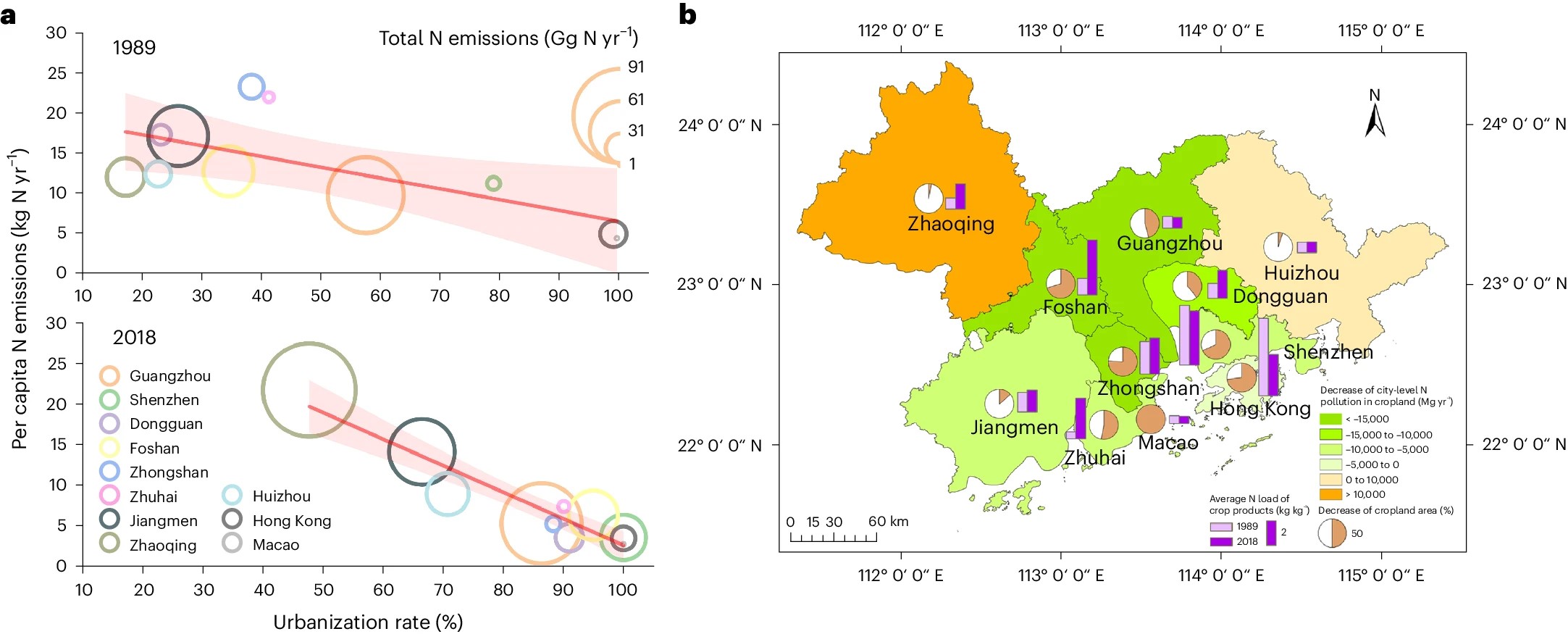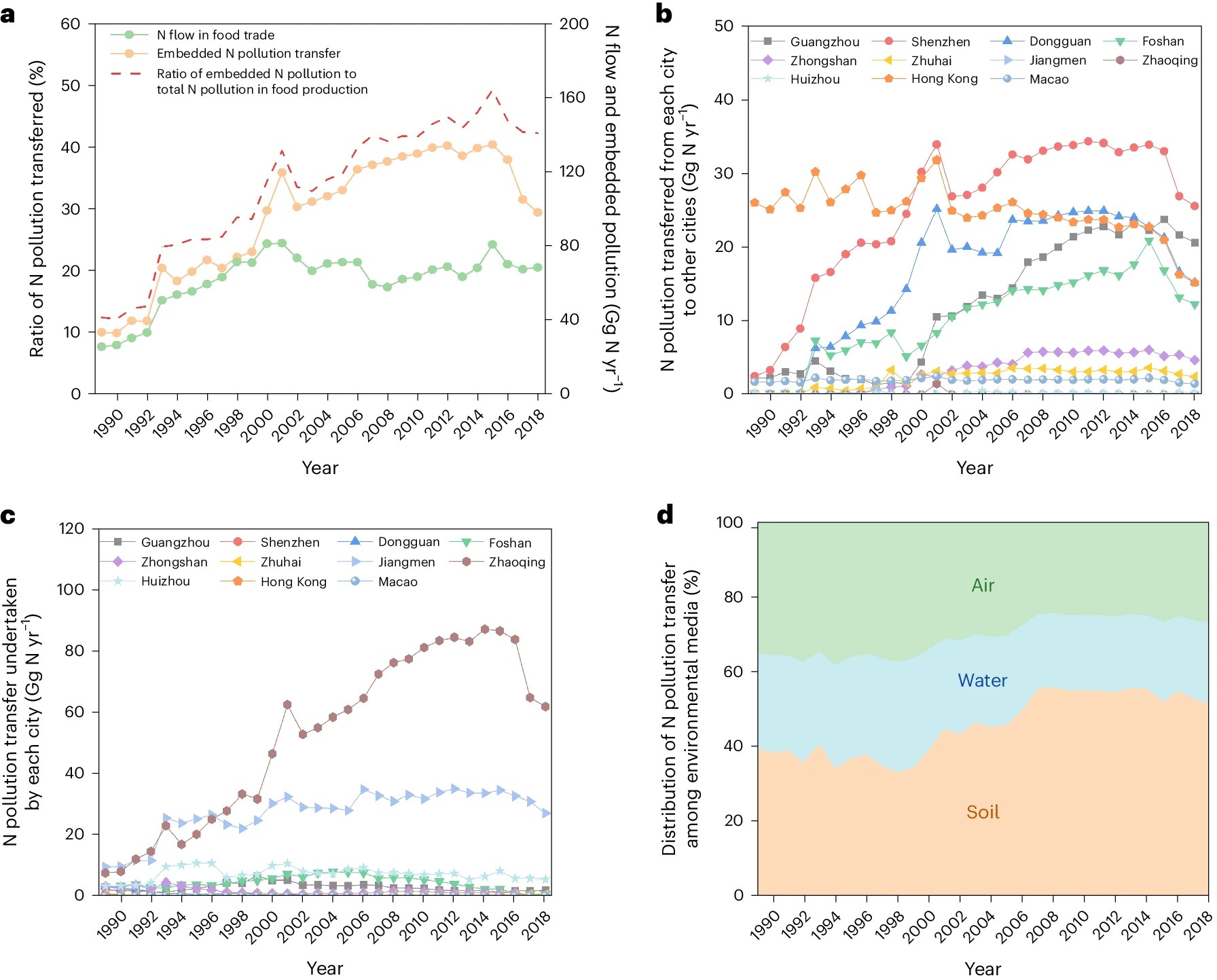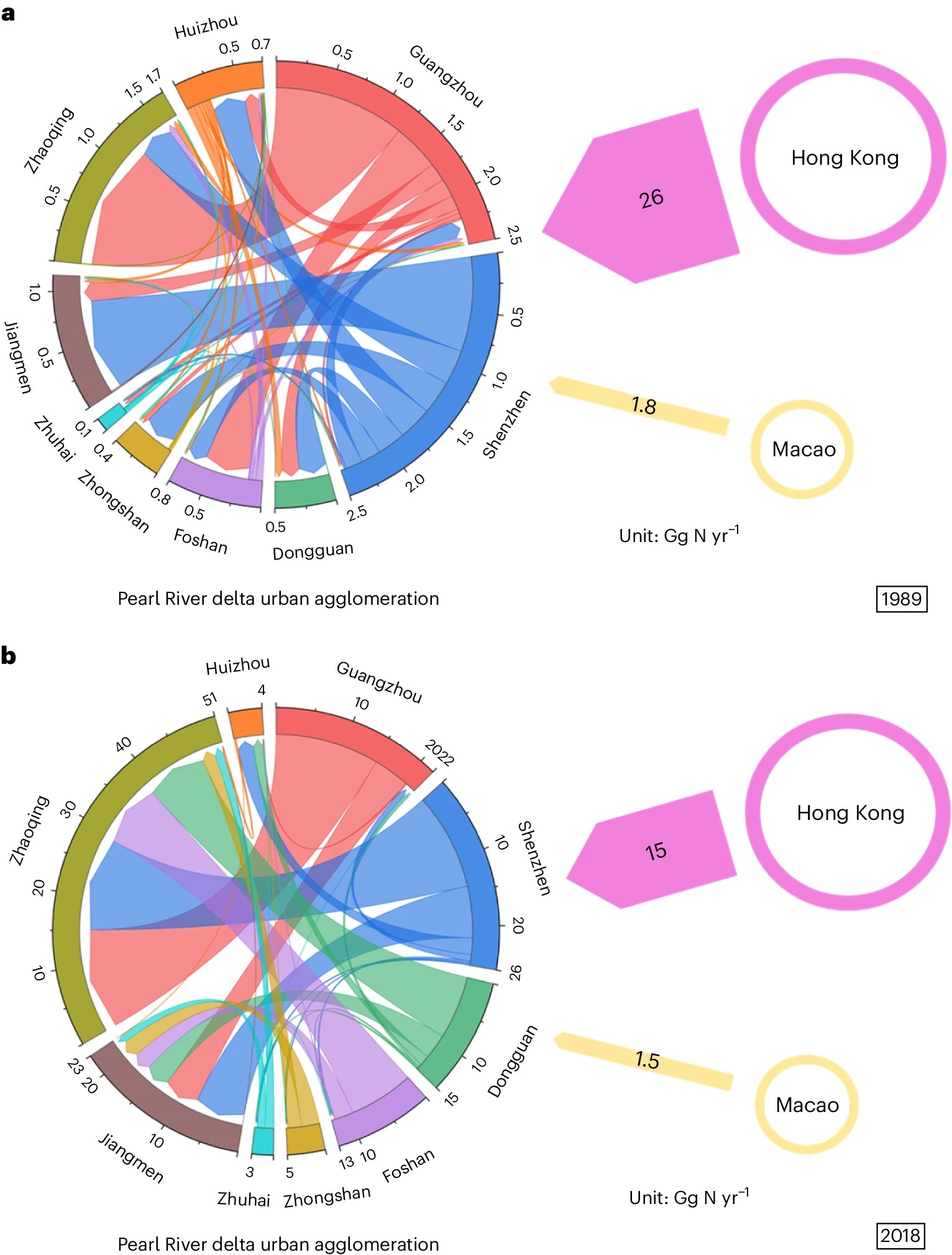Recently, the research group led by Professor Wen Zongguo from the School of Environment, Tsinghua University, has made new progress with collaborators in the field of sustainable nitrogen (N) management in the food system during the process of urban cluster development. The research reveals a significant increase in N pollution transfer embedded in food trade from highly-developed cities to less-developed cities along with the uneven agricultural contraction within the urban agglomeration, decreasing N use efficiency of crop production and sustainability of the food system. The study analyzes the spatial interaction mechanism of N metabolism in the food system between cities, providing scientific support for promoting coordinated N pollution control and the transformation toward sustainable N management in urban agglomerations.
In the context of urban cluster development, the diverse development paths and significant industrial division among cities within an urban agglomeration can lead to uneven changes in their agricultural production scale, which reshape the inter-city food supply patterns and the spatiotemporal characteristics of N pollution from the food system. Mitigating overall N pollution in the urban agglomeration requires clarification of the spatial-temporal metabolic mechanisms of N in the food system, to avoid the exacerbated spatial spillover of N pollution under localized management modes, and fully leverage the synergistic effects between cities to enhance N use efficiency and system sustainability. Existing research has focused on the overall N flows and emissions in regional food systems, while the evolving patterns and spatial correlation mechanisms of N pollution transfer embedded in food trade among multiple cities within a region, and its potential challenges to regional N management, are not yet clear.
Using Guangdong–Hong Kong–Macao Greater Bay Area of China as a case, this study reveals a substantial decrease in N use efficiency of crop production from 45.2% to 29.3% during 1989–2007, along with a growing level of concentration of food N production in less-urbanized cities. From 1989 to 2018, 12.3% to 42.2% of total N pollution in food production became embedded in inter-city trade, leading to aggregation of N pollution in peripheral cities with relatively low levels of economic development. Factors such as loss of agricultural labor force and differences in environmental regulation level can drive the spatial transfer of N pollution, while technological advancements in fertilizer application and waste disposal have positive effects in promoting multi-city collaborative pollution reduction. The study suggests that protection and intensification of cropland from urban encroachment, as well as enhancing the economic and technical synergies among cities, can serve the sustainable transition of the food system with coordinated N pollution mitigation.
The paper entitled "Uneven agricultural contraction within fast-urbanizing urban agglomeration decreases the nitrogen use efficiency of crop production" was published on Nature Food on 14 May, 2024. Professor Erik Mathijs and his colleagues from Sustainable Food Economies Research Group, Department of Earth and Environmental Sciences, KU Leuven published a News & Views article entitled "Tracing inter-city nitrogen pollution" concurrently, providing a detailed introduction of this research. They pointed out that this research fills the gap in “a more fine-grained analysis of the linkages between agricultural production, urbanization and trade, and how these linkages have changed over time”, and “proves that fast-urbanizing cities should implement protection for their high-quality farmland, while using synergies among cities to leverage the advantages of agricultural modernization on improving N use efficiency.”
Professor Wen Zongguo is the corresponding author of the paper. Dr. Chen Chen, a PhD graduate from the School of Environment, Tsinghua University, who works as a postdoctoral researcher at the Department of Urban Planning and Design, The University of Hong Kong, is the first author of the paper. The coauthors of the paper include Professor Sheng Ni and Associate Professor Song Qingbin from Macau University of Science and Technology. The research was supported by the Joint Scientific Research Fund of the National Natural Science Foundation of China and the Science and Technology Development Fund of Macao, National Science Fund for Distinguished Young Scientists of China, and Research project of China Rural Research Institute, Tsinghua University.

Fig. 1 Variance in food-related N emissions across the 11 cities in GBA in 1989 and 2018. a, The relationship between urbanization rate and N emissions. b, The city-level change in cropland area (the pie chart), N pollution in cropland (the background colour) and average N load of crop products between 1989 and 2018 (the histogram).

Fig. 2 N pollution embedded in inter-city food trade within GBA during 1989–2018. a, N flow and embedded N pollution transfer in the food trade, as well as the ratio of embedded N pollution to total N pollution in food production. b, N pollution transferred from each city to other cities. c, N pollution transfer undertaken by each city. d, Distribution of inter-city N pollution transfer among environmental media.

Fig. 3 Inter-city flows of embedded N pollution. a,b, N pollution transfer among Hong Kong, Macao and the PRD region in 1989 (a) and in 2018 (b).





